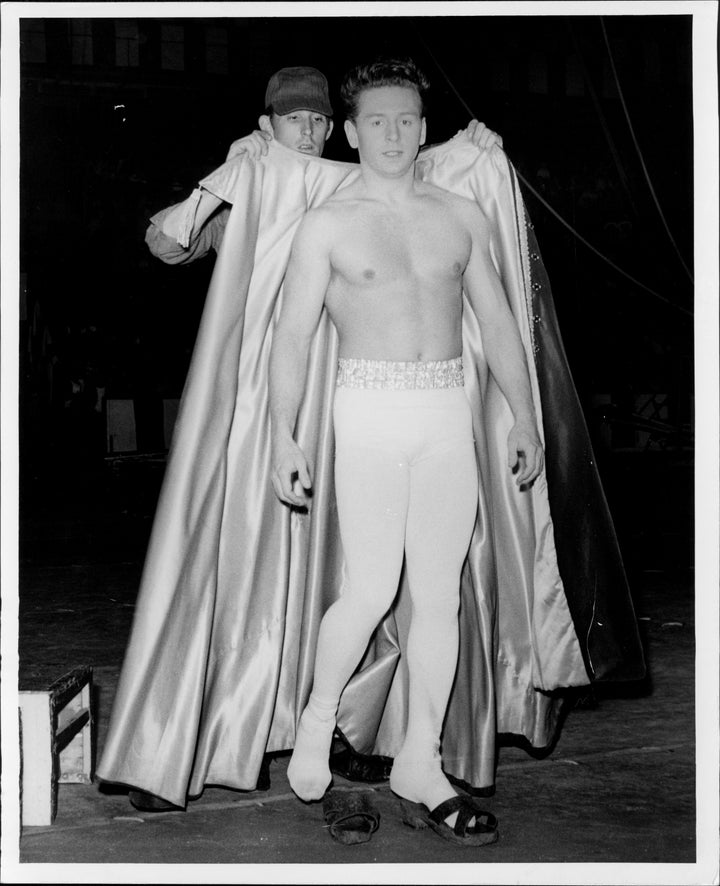A Vegas showman with a poodle act was stabbed to death dozens of times in his trailer. His lover, a good looking drifter, was locked up for the crime. But it turns out he didn’t do it and the story, being as Vegas as things go, has another twist. The prosecutors knew of the possibility of his innocence and tried him anyway. And still there’s even more ― but you’ll have to read the article to find out what happened next.
In the meantime, we spoke with Megan Rose, the reporter who uncovered all the details for her feature in Vanity Fair and ProPublica, about how she got the story.

The article has an intriguing headline, “Kafka in Vegas.” Where did that come from?
“Kafka in Vegas” came from the brilliant minds at Vanity Fair, which was ProPublica’s partner on the story. We all loved the headline for how it captured the byzantine nightmare Fred Steese had been put through with his wrongful conviction and the nearly 21 years of legal hoops he had to jump through to prove his innocence. The absurdity of Fred’s tale, as well as the details of the murder, felt very Kafkaesque.
Normally you cover the military for ProPublica. This is a classic story of true crime. How did you get the assignment?
A former colleague from the Las Vegas Sun newspaper, where I worked almost a decade ago, had become an investigator for the Federal Public Defender’s Office and was assigned Fred’s case. I heard tidbits from her over the years about Fred’s plight and was fascinated with the story and the efforts to free him. My gracious editors at ProPublica let me divert from the military beat to investigate.
This story is very complicated. There are so many players and so many threads. Where did you begin your reporting? And then how did you proceed.
There is so much to this story that my first draft was 26,000 words! Step one was to figure out how a man with such an extensive alibi ended up convicted in the first place, so that took me back to the 1995 trial. Fred’s civil lawyer kindly let me take over her conference room in downtown Las Vegas, and I spent a week going through more than a dozen legal boxes filled with paperwork: the 5-week trial transcript, Fred’s childhood history, all the motions filed over the years, etc. From there a picture emerged of two prosecutors who appeared to have not sought justice but a conviction.
At the same time, I was talking to all the folks who had a hand in freeing Fred. In a sense that was the simplest aspect to report because, despite there being a lot of ground to cover, their work was all in the court record or meticulous notes.
Separate from lining up all the decades of details, I also had to make sense of the legal issues. I found myself in the NYU law library picking up texts about habeas corpus and speaking with many prominent legal scholars to get a foundation in the sometimes illogical world of post-conviction law.

What about the story surprised you?
I was really surprised at the dogmatic refusal of the Clark County DA’s office to reexamine the case against Fred. In 1995, prosecutors had argued that Fred’s alibi was a fantasy and that his long-lost brother – whom he hadn’t seen since he was a child – had been impersonating him in an elaborate scheme. Nearly two decades later, Fred’s federal public defender proved that completely false.
His investigator found Robert, which the prosecution had been either unwilling or unable to do, and showed that Robert was in Texas during the time the prosecutors claimed he was impersonating Fred in Wyoming, Utah and Idaho. The DA’s office never offered another theory to explain Fred’s alibi. They didn’t seem troubled that exculpatory evidence had been found in the prosecution’s file, or that [William] Kephart [who prosecuted the case] had elicited false testimony from a jailhouse snitch on the stand, or by any of the other myriad problems with the case. The people who put Fred away weren’t even at the DA’s office anymore. The man in charge now, Steve Wolfson, had no connection to the original trial. Yet, he was unwilling to question if the state had the right man.
What was most challenging?
Sorting through decades of complex legal issues and putting it all into its proper context was challenging at times. I was grateful for the legal experts who let me bounce things off them, and Fred’s lawyer, Ryan Norwood, who patiently took me through all the details. There was so much that happened in the trial and afterwards that I couldn’t possibly get it all in the story, so I had to choose salient legal twists and turns that captured the overall essence. I didn’t want to over or under emphasize the wrong things, and since my expertise is in the military, I had to rely much more on outside advice than typical.
Megan is a military reporter for ProPublica. If you like going behind the scenes of stories, be sure to subscribe to “The Breakthrough,” ProPublica’s new podcast, which does just that.
Sign up for the HuffPost Must Reads newsletter. Each Sunday, we will bring you the best original reporting, long form writing and breaking news from The Huffington Post and around the web, plus behind-the-scenes looks at how it’s all made. Click here to sign up!
